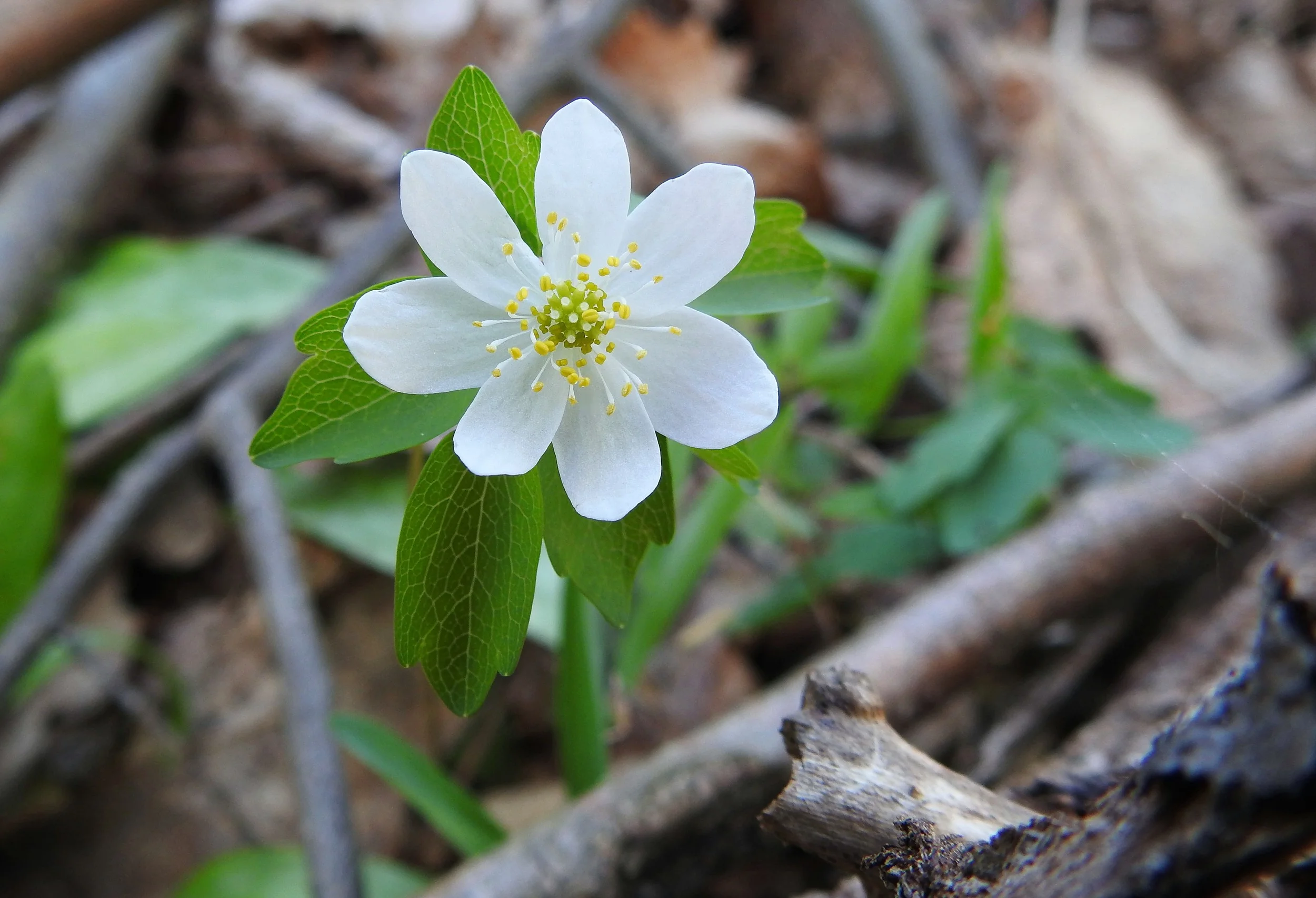The Phenology of Flowering Plants
Rue Anemone (Thalictrum thalictroides)
In an article entitled First Flowering Dates for Spring Blooming Plants of the Washington DC Area, Stan Shelter and Susan Wiser of the Smithsonian Institution performed a thirteen year study of spring blooming plants within an approximate 35 mile radius between Baltimore and Washington. Shelter and Wiser specialize in Phenology, the study of natural cycles in biology and their relation to climate. They found that the regular flowering season in central Maryland begins in late February and early March. When evaluating all observed plants (over 1000 species) in the study, alien plants (not native to the United States) accounted for 25% of the plants observed. In general, native species begin to bloom in late February. In mid to late March the number of species coming into bloom increases sharply. This rate continues to increase until late April when the number of first flowering plants reaches a peak. The level then drops off through late May.
The main reason so many plants flower in mid to late April is that they are woodland spring ephemerals (meaning ‘short-lived’) which must complete large parts of their life cycles before the trees have finished leafing out. The study reaffirms the long held contention that species whose flowering is primarily governed by day-length will show the least year-to-year variability in first flowering dates, while those species whose flowering is governed more by climate conditions will show the most year-to-year variability. When you look at the article’s bell curve of flowering times, it becomes obvious that we must all take weekend hikes during April through May, especially into wetland and bottomland areas and slopes of mature forests which have some of the highest overall wildflower diversity.

